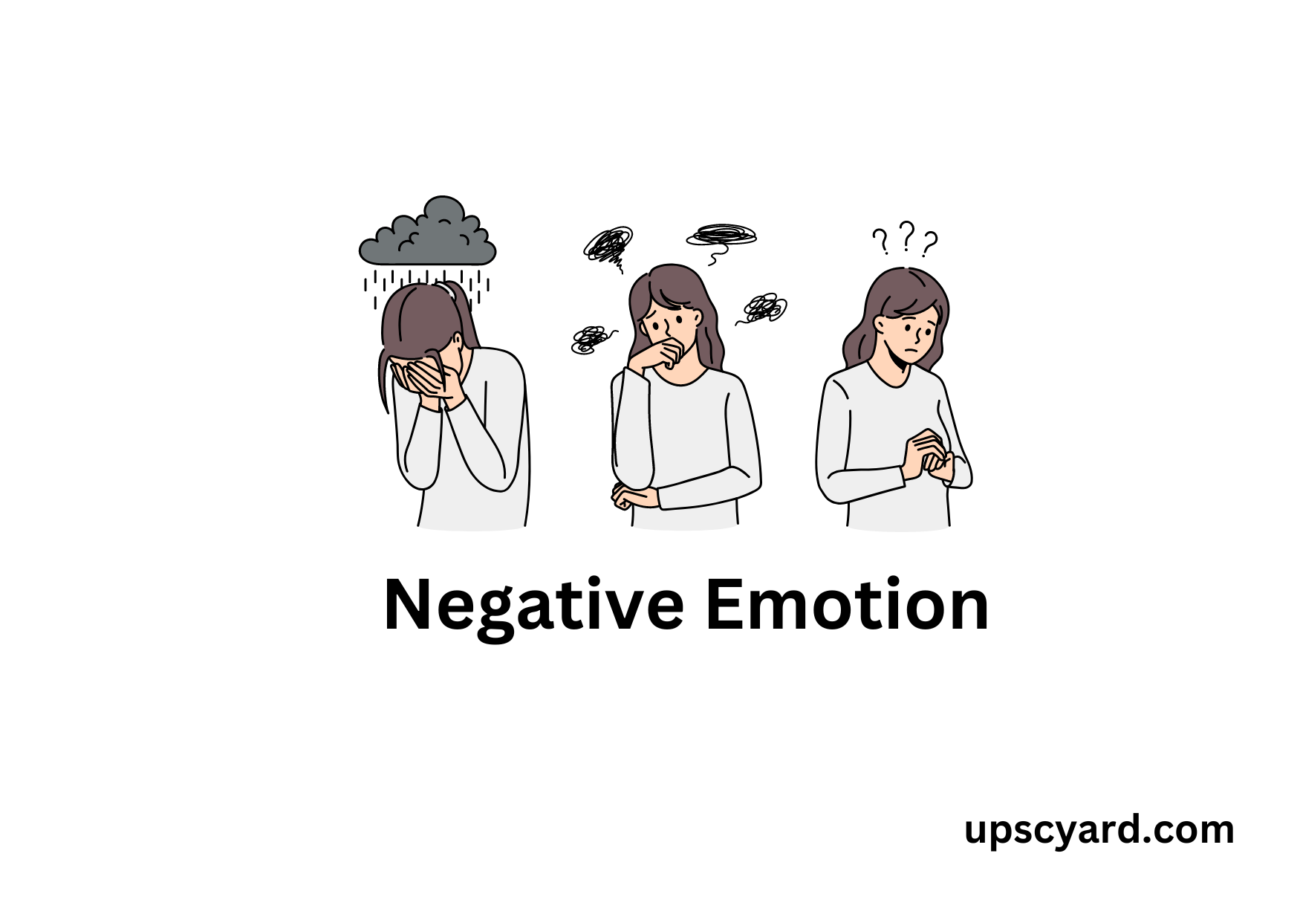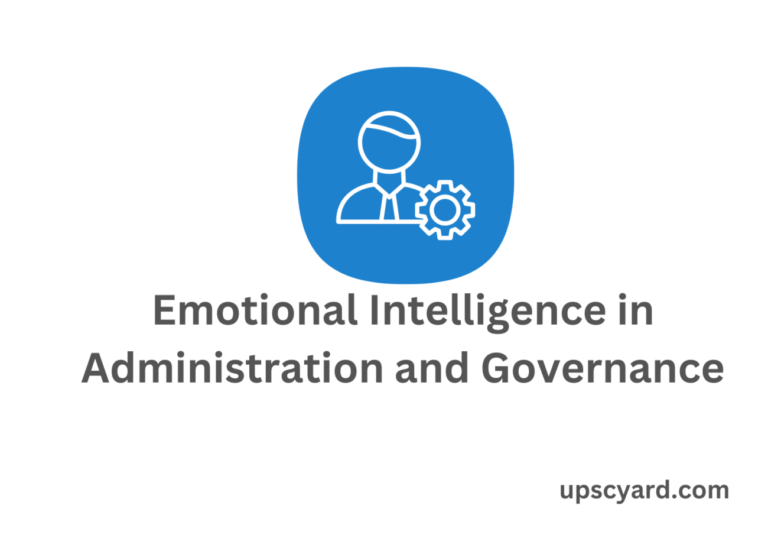What are Negative Emotions
It is crucial to differentiate between emotions and feelings as they are not exactly the same. Although they are related, there is a more significant distinction than one might initially think. During my research, I was surprised to discover this difference.
Emotions – Emotions are considered as more primal responses. They originate in the subcortical regions of the brain, such as the amygdala and the ventromedial prefrontal cortices. These regions are responsible for triggering biochemical reactions that directly affect your physical state.
Feelings – Feelings are considered to come after emotions and are often our responses to the various emotions we go through. While emotions can be more universal experiences shared by all humans, feelings are more personal and subjective, shaped by our individual experiences and how we interpret our world based on those experiences.
Examples of emotional / affective factors which are irrational, affecting our behaviour.
- Smashing a tennis racquet after losing a match
- kicking the door because you hurt your feet while closing it
- Hitting the phone because the touch screen isn’t working properly

Psychologists have extensively studied the spectrum of human emotions and their definitions. In 1999, Eckman identified six primary basic emotions:
- Anger
- Disgust
- Fear
- Happiness
- Sadness
- Surprise
Later on, Eckman expanded his list to encompass an additional eleven basic emotions:
- Amusement
- Contempt
- Contentment
- Embarrassment
- Excitement
- Guilt
- Pride
- Relief
- Satisfaction
- Sensory Pleasure
- Shame

Examples of Negative Emotions
Negative emotions are a natural part of the human experience, and they serve a purpose in our lives. They provide contrast and context, enabling us to recognize and cherish positive emotions. However, if you notice a persistent inclination towards a specific emotion, especially if it’s a negative one, it’s essential to delve deeper into the reasons behind it. Understanding the root cause can lead to personal growth and emotional well-being.
Anger:
Have you ever experienced someone refusing to let you do something you really wanted? Does that make you feel an intense surge of frustration, causing your blood to boil and your emotions to flare up? This is what we commonly refer to as anger. It’s our body’s response to things not going our way, and it’s an instinctive attempt to try and rectify the situation.
Anxiety:
Similar to fear, anxiety also serves as a warning system for potential threats. While anxiety is often seen as a negative emotion, recent research has shown that it can actually enhance our ability to recognize and respond to perceived threats. People with anxiety tend to shift their energy towards physical action, making them more prepared to handle potential dangers.
Guilt:
Guilt is a multifaceted emotion that can stem from regret over past actions or the impact of our behavior on others. It is often referred to as a “moral emotion” and can serve as a strong catalyst for personal growth and positive changes in our lives.
Annoyance:
Perhaps you have a colleague who talks too loudly or a partner who leaves dirty dishes in the sink, and these behaviors irritate you. This feeling of being bothered or irritated is what we call annoyance, and it is a milder form of anger according to Pluchik’s wheel. It stems from a similar thought process of something not going the way we wish it would, but we have no control over it.
Fear:
Fear is a primal emotion closely linked to our survival instincts. It acts as a warning sign for dangerous situations, potential threats, or unexpected obstacles. The purpose of fear is not to distress us, but to help us navigate potential dangers and challenges more effectively.
Despair:
When you repeatedly try and fail to achieve a specific goal or task, you might experience despair. This emotion arises when we don’t get the results we want, leading us to feel like giving up. However, despair can also be a useful reminder to take a break and recharge before continuing to pursue challenging goals.
Sadness:
When faced with setbacks like missing a deadline, receiving a poor grade, or not getting a desired job, you might experience sadness. This emotion arises when we feel dissatisfied with ourselves, our achievements, or the behavior of others around us. Sadness can be a powerful motivator for change, as it indicates our passion for something and encourages us to pursue improvements.
Apathy:
Apathy can also be a complex emotion, characterized by a loss of enthusiasm, motivation, or interest in things we once enjoyed. It can arise when we feel a lack of control over a situation, leading us to express a passive-aggressive form of rebellion.
Should we aim to completely overcome and eliminate negative emotions?
In short, it is not advisable to completely eliminate negative emotions.
As human beings, it is natural to try to avoid emotions that make us feel bad. However, negative emotions serve a purpose in our lives and should not be disregarded entirely. They are a normal, healthy, and helpful aspect of our emotional experiences. Viewing them as a sign of weakness or low emotional intelligence is a misconception.
Suppressing negative emotions can lead to more emotional distress in the long run. Instead, it is essential to explore and understand the purpose behind each emotion. This exploration allows us to develop new ways of responding to these emotions, which supports our emotional growth and overall well-being.
Furthermore, it’s crucial to recognize that emotions are not the only source of information available to us. We should also consider our past experiences, knowledge, memories, values, and desired outcomes when responding to any given situation.
Ultimately, we have the power to decide how we respond to our emotions and not let them control our behavior. Emotions are just a starting point, and our choices and actions shape how we navigate through them.
Is it possible for them to improve memory accuracy?
As mentioned earlier in the article, research suggests that negative emotions can indeed enhance our memory accuracy.
Psychological studies strongly support this idea, indicating that emotions facilitate access to “mood-congruent” information in our memory (information associated with specific emotions) (Isen et al., 1978; Bower, 1981).
Kensinger, Garoff-Eaton, and Schacter (2006) discovered that participants who linked negative emotions to certain objects were more precise in recalling visual details of those negatively associated items compared to objects linked to neutral emotions.
Brain imaging studies have also established a connection between emotional processing regions of the brain and areas responsible for memory encoding and retrieval (Kensinger, 2007; Bisby and Burgess, 2017).
Here are six tips to effectively manage, process, and embrace negative emotions.
- T = Teach and Learn: Listen to your body’s signals and interpret the meaning behind negative emotions. Understand your emotional responses and acknowledge their purpose.
- E = Express and Enable: Allow yourself to express negative emotions openly and explore them with curiosity. Embrace your natural instincts without resentment.
- A = Accept and Befriend: Befriend yourself and accept your emotions as a natural part of being human. Use positive affirmations to promote acceptance.
- R = Re-appraise and Re-frame: Accept your emotions as a natural part of who you are, and focus on reframing how you react to them. Respond positively instead of reacting in detrimental ways.
- S = Social Support: Understand that negative emotions are common to all and approach others with compassion and empathy when they experience such emotions.
- H = Hedonic Wellbeing and Happiness: Balance positive experiences with negative ones to avoid falling into rumination. Focus on recalling positive experiences as well.
- O = Observe and Attend: Mindfully observe your emotional and physiological responses without judgment, repression, or exaggeration.
- P = Physiology and Behavioral Changes: Observe your physiological reactions along with your emotional responses. Pay attention to changes without judgment.
- E = Eudaimonia: Strive for a state of wellbeing and authenticity, actively engaging in actions that lead to overall happiness, health, and prosperity.
Additional tips to manage negative emotions:
- Envision your ‘Best Possible Self’ to reframe how you approach challenging scenarios.
- Practice gratitude to positively impact your mood and perception of events.
- Explore mindfulness techniques to understand and reframe anger or annoyance emotions.
Incorporating these strategies can lead to a better understanding and acceptance of negative emotions, helping you respond to them in a healthier and more positive manner.



